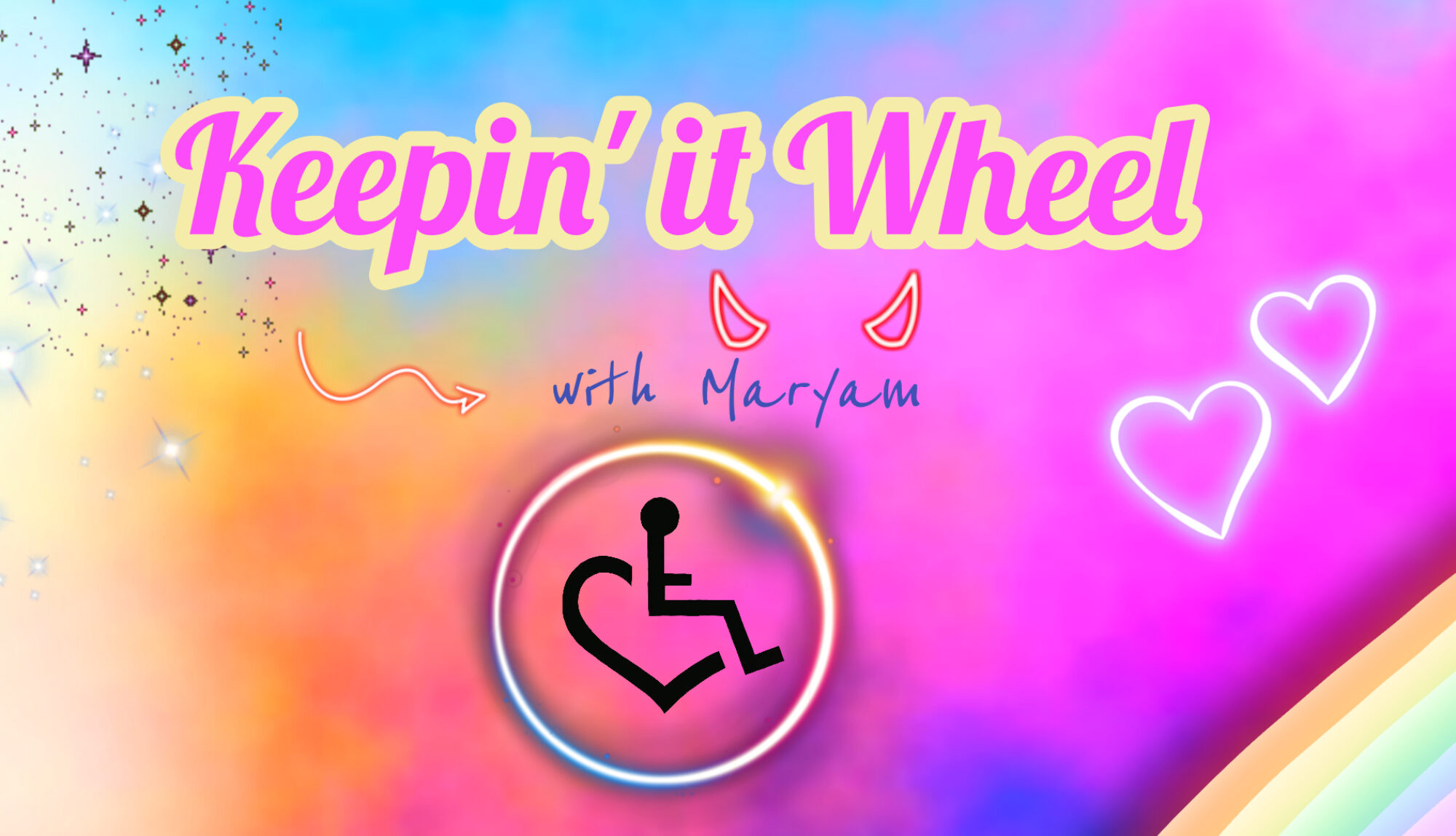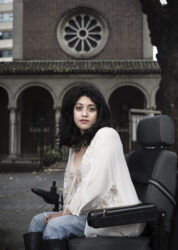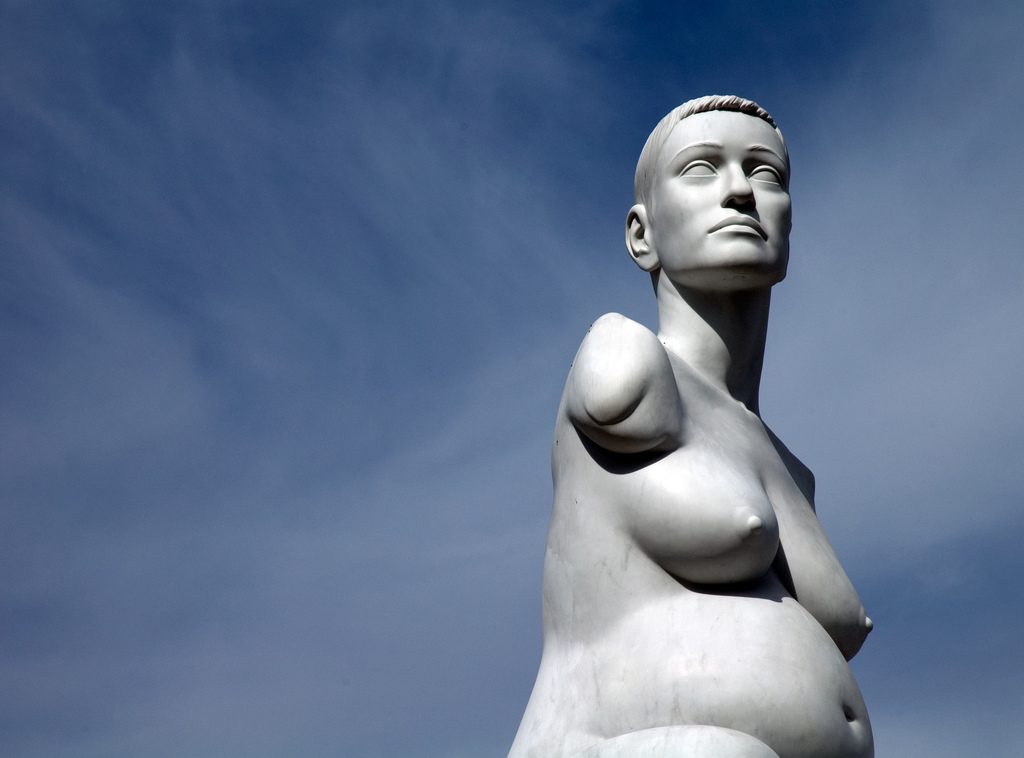Image shows the sculpture “Alison Lapper Pregnant,” a white marble statue of a woman with short cropped hair, naked with a pregnant belly, and a stump below her shoulder, against a blue sky with feathery clouds
The following piece was published in the ILMI E-Bulletin, October 2nd 2020:
“I am never going to conform to society’s requirements and I’m thrilled because I am blissfully released from all that crap. That’s the liberation of disfigurement.”
“The Sexual Politics of Disability,” by Tom Shakespeare et al.
I know I wasn’t the only one who seriously enjoyed last night’s chat with Clara, a disabled BIPOC fashion model and blogger who runs the Rollin Funky blog and Instagram page. This woman is glamorous, vivacious, and has a massive collection of HIGH HEEL shoes- yes, that’s right. As a wheelchair user, she is at an advantage on the runway; she doesn’t need to worry about stumbling.
I have never worn high heels in my life. The appeal of Carrie Bradshaw’s stocked closet was always lost on me, and with it, a seeming rite of passage to womanhood. Can you be sexy if you will never walk like Rihanna?
Fashion and the cultural norms represented by it have an inescapable hold- somehow it was not until I was 26, after finally ditching the perpetual runners I’d had since childhood for knee-high boots and Doc Martens, when I realised how infantilised I had felt- shoes.
I had come to see my disability as liberating me from the shackles of societal beauty expectations. While able-bodied teens around me were developing eating disorders in their pursuit of the perfect body, I was released from suffering the illusion that my body could ever conform to such ideals represented in the media. Having a disability helped me see through the bullshit. I had to stand firm in my belief that there was no such thing as the perfect body and that all bodies were beautiful by virtue of being spirit incarnate. “And if the body were not the soul, what is the soul?” as Whitman my saviour sang.
And yet such media representations of able-bodied beauty are insidious. That’s why we need people like Clara making sure we are represented and seen in this sphere, which also extends to the runway of life. When we are seen truly embracing our bodies, our mere presence and existence is defiant in and of itself. When we love our bodies despite being told otherwise, we liberate others from these misconceptions.
As Clara said last night: “I think it’s important to embrace your body and have self-love for your body. A lot of the time when we hear about body positivity we hear it in relation to size- we don’t necessarily hear it in relation to different aspects of ability. Sometimes people automatically think that if you are differently abled you can’t be body positive and you can’t have self-love. I think it’s not true, it’s society’s ideas, this wanting to fix something, and make you feel like you’re not worth gold, and you most certainly are. You are everything that you are, and you do not need to be fixed.”



After exploring a number of the blog articles on your blog, I really like your technique of writing a blog. I saved as a favorite it to my bookmark webpage list and will be checking back in the near future. Take a look at my website too and tell me what you think.